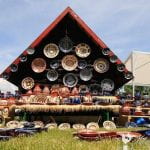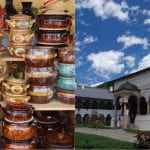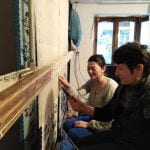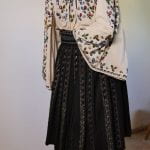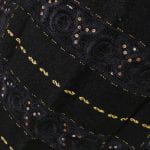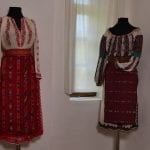*Part of this project involved members from the UO team traveling to Romania and members of the Romania team traveling to Oregon. These travels were scheduled for the spring of 2020. Due to Covid-19 all travel was canceled. Even though the physical visits were canceled each group managed to put together meaningful and thoughtful virtual tours. Both groups tried to stay closer to the original itinerary. Check out the awesome highlights from the Romanian virtual tour!

April 1, 2020
Hello, Friends!
Today, we should be welcoming you at Henri Coanda International Airport and giving you a tour of the capital city. I am sorry we have to give you a virtual tour instead… I have looked for the best video presentations to share, and though I am not too pleased, here they are.
Check out this video clip! The first presents the historic buildings and shows what a mixed architectural style Bucharest has. If you want to read an article, here is a link – and you can always google for more information.
Then, I propose a walk along the main street of the city, very much the route we would have taken on foot with you – of course, stopping at places of interest and telling you stories. Check out this video clip!
To get a better sense of the place and people from the perspective of a tourist, you can watch this video (feel free to stop at minute 7 if you are too tired for a nightlife tour)
I am sorry we cannot share the taste and smell of foods and the sound of an ordinary day in the life of this interesting city… Hope to still be your hosts one day!
April 7, 2020
Hello everyone! I am going to present you the beauty of Horezu and the Ocnele Mari Salt Mine from Valcea. I’ll start with a short presentation of Horezu.
In a depression bordered by a chain of Carpathians in the north part, is a quiet mountain town, famous for bulgarele art born of clay, ceramists artisans created beautiful and admired by many people.
Situated in a beautiful natural landscape (surrounded by mountains), Horezu is the most famous pottery center in the country and one of the important tourist spots in Romania. Every year many tourists, Romans and foreigners, are attracted by the large number of monasteries in the country, located in a mountainous area with rich flora and fauna, the landscapes of a charm, but the occupation of craftsmen and ceramists. Horezu is known as a center of ancient pottery. Every year, the town holds the well-known pottery fair, “Cocoșul de Hurez”, on the first Sunday of June. At this fair lots of pottery artists come to show their talent. You can find more information about Horezu here.
And the Ocnele Mari Salt Mine can’t be forgotten. Ocnele Mari, where the salt mine is placed, it is known even from Neolithic Age and was first mentioned officially in a document in 1402, although the area had inhabitants since the Stone Age. By the early 1960s, a local teacher, George Mosteanu, discovered accidentally in his garden in Cosota, some pots of clay, different from those found in the Valea Bradului, located up the hill. Archaeologists agreed there was a Dacian fortress over 2000 years, called Buridava (city of Boers) that Greek historian Ptolemy mentioned in his writings.
If you are coming to Romania this is a must! I, myself, been there a few times and it’s absolutely amazing. I was shocked by its beauty. And not only that it’s an unique experience, but is actually good for your health too. Many people come here to treat or prevent various breathing problems, such as asthma. Also the salt mine has a beneficial impact on the entire body. You can read everything about the Ocnele Mari Salt Mine on this site.
And here is a video where you can see many pictures from inside the salt mine:
I hope that this presentation and the sites helped you to get to know a little bit more of Romania!
April 9, 2020
More Fun Videos and Pictures from Romania
This is the virtual tour of the Folk Architecture Museum of Curtisoara, part of the Gorj County Museum and its soundtrack is Romanian traditional folk music:
This is a short history of the Gorj County Museum and the virtual tour of the History-Archaeology Museum:
Muzeul de Arta din Targu Jiu (The Art Museum from Targu Jiu) NOU 2020. This video is a tour of the Art Museum, part of the “Alexandru Stefulescu” Gorj County Museum:
This video is focused on Cobilita, a folk music song dedicated to the old tradition of ”Cobilita”, part of the Romanian Intangible Cultural Heritage. The song is sung by young talented Romanian folk music singers, who won many prizes at various folk music competitions. This is a great example of young people continuing traditions and folk culture:
Here are some photos from an exhibition of Romanian folk costumes (from the southern region of Romania) from the Gorj County Museum`s patrimony. The photos are either “entire view” of the costume or close, detailed view of the fabric, pattern and color.

